Howse Family History & Genealogy
Howse Last Name History & Origin
AddHistory
We don't have any information on the history of the Howse name. Have information to share?
Name Origin
We don't have any information on the origins of the Howse name. Have information to share?
Spellings & Pronunciations
We don't have any alternate spellings or pronunciation information on the Howse name. Have information to share?
Nationality & Ethnicity
We don't have any information on the nationality / ethnicity of the Howse name. Have information to share?
Famous People named Howse
Are there famous people from the Howse family? Share their story.
Early Howses
These are the earliest records we have of the Howse family.
Howse Family Photos
Discover Howse family photos shared by the community. These photos contain people and places related to the Howse last name.
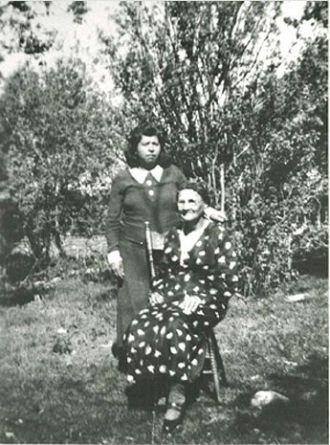
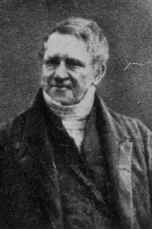

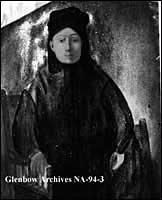
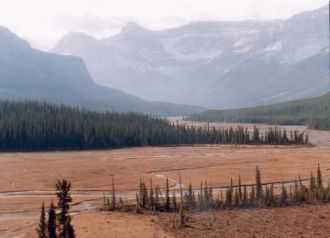
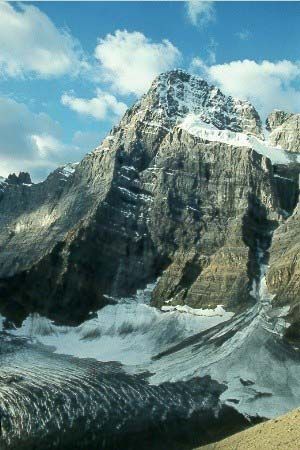
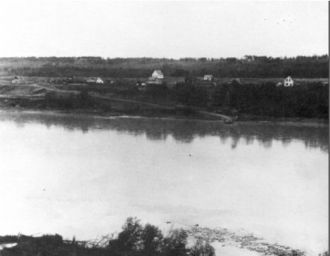
Howse Family Tree
Discover the most common names, oldest records and life expectancy of people with the last name Howse.
Updated Howse Biographies
Popular Howse Biographies

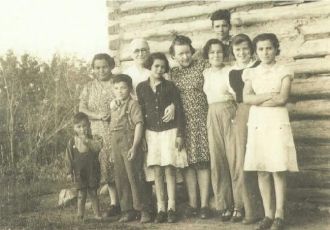
Howse Death Records & Life Expectancy
The average age of a Howse family member is 72.0 years old according to our database of 697 people with the last name Howse that have a birth and death date listed.
Life Expectancy
Oldest Howses
These are the longest-lived members of the Howse family on AncientFaces.
Other Howse Records
Share memories about your Howse family
Leave comments and ask questions related to the Howse family.
Written by Patrick Best and Carol Vulliamy
For those who look back through time and search the Canadian history books, the surname of Howse becomes evident. In Canadian history, it all started with Joseph Howse, who originated from Cirencester, England. He was from a family of seven or more children.
Joseph was the only member of his family that travelled to Canada. He was one of the original, founding employee’s of the Hudson’s Bay Company. In 1795, he embarked on the ship, “King George” which was owned by the Hudson’s Bay Company. The ship set sail from Gravesend, England and two and one half months later, he disembarked at York Factory, Ruperts Land; the land that is now known, as the wonderful country of “Canada”.
To this land and the Hudson’s Bay Company, he was loyal for the better part of twenty years before retiring back to his motherland of England. During the time that he was in Canada, he mapped out a great part of what is known as Manitoba, Saskatchewan and Alberta. Joseph worked with David Thompson as a guide, and in turn, David Thompson named a mountain, a pass and a river after Joseph Howse. These stand as great monuments for his hard work and dedication to this new country, which was filled with many adventures.
To this day many of his descendants celebrate the life of Joseph Howse at the Victoria Settlement, Alberta and at Bowness Park in Calgary, Alberta. Like so many of his descendants, Joseph was a hard worker and a strong leader. Many of Joseph’s descendants also became pioneers of this frontier land, which he helped to develop. It is to people like this, that we give our utmost
praise and glory to. If it were not for their hard work, perseverance and dedication to their families, the Howse family would not have survived to this very day.
We, the writers of this dedication, are very proud to say that we are merely two of the many descendants of this courageous and adventuresome man. It is our desire to preserve as much of the Howse Ancestry as possible for the many Howse generations that are yet to come.
Howse Pass (elev. 1,525 meters), occasionally touted in recent times as a practical highway route to shorten travel time between Edmonton and Vancouver, was crossed in 1810 by Joseph Howse, a Hudson's Bay Company trader. The pass had been crossed earlier in 1807 by David Thompson, who gave it the name Howse Pass on his 1814 map. Howse had been in charge of Carlton House, near present-day Prince Albert, Sask., from 1799 to 1809. He retired to England in 1815.
The Mistaya Canyon trailhead is located at kilometre 71, and from this point forth be on the lookout for black bears and the other large animals that call this area home. While crossing the bridge over the North Saskatchewan at kilometre 76 in the spring of 1996, park wolf researcher Carolyn Callaghan watched a gray wolf loping along the river's edge directly below.
This area is known as the Saskatchewan River Crossing, or The Crossing, because it is where the pack trains of the explorers and fur traders in the 1800s used to cross the river on route to the wilds of British Columbia. It is the meeting place of the waters of the Howse River, the Mistaya River and the North Saskatchewan.
To understand why to preserve the Howse, take a hard lookat the Bow Valley
The pristine Howse Valley: You can count on two hands the few which remain.
You can count the principal wild valleys of Banff National Park on two hands: the Alexandra, the Cascade, the Pipestone, the Clearwater, the Siffleur, the Red Deer, the Palliser and the Howse. Although the integrity of some is threatened by logging, by gas and oil exploration, and by recreational development outside the park, these valleys are large enough, and in some cases remote enough, to have withstood the pressures of development originating within the park.
With their spectrum of relatively pristine habitats, they stand as mute counterpoint to the Bow, the Spray, the Mistaya, the North Saskatchewan, the Minnewanka and many lesser valleys that have forever been transformed by road access and subsequent development. They anchor the waning promise that Banff National Park can continue as a viable ecological reserve, with a wild, still-beating heart.
To propose a new road into any of these wild valleys is to fire a crossbow bolt into the gut of wilderness. Nonetheless, the ill wind of clamour for a "Howse Pass Highway" is once again blowing from central Alberta. The 1988 management plans for Banff, Jasper, Yoho and Kootenay national parks called for the survey and legislation of wilderness. Environmentalists applauded. In Banff National Park, such surveys would result in protection by order in council of 93% of the landscape. But almost eight years later, the Canadian public is still waiting for Parks Canada to comply with this instruction, contained in a document of its own making. The impediment? The surveys are time-consuming and costly.
By way of contrast, in a span of just over three years, Parks Canada will have shepherded the proposal to twin 17 kilometres of the TransCanada Highway in Banff National Park from political promise to actual pavement. In doing so, it will have spent approximately $30 million of the taxpayers' money. The public requires no more lucid example of the grossly misplaced priorities of Parks Canada--the agency charged with preserving and protecting for all time Canada's natural heritage, and whose first priority is supposed to be the maintenan
Henry Howse had a scrip application on August 19, 1875 at High Bluff, County of Marquette, Manitoba.; Henry Howse; High Bluff, Marquette; Farmer; HB Head: wife and children; born 1836; St. Andrews; Father: Henry Howse (HB); Mother, Jane Spence (HB); Henry Howse; 20 August 1875; Andrew Spence and George Adams. C-14934 (MBS Scrip Applications, Original White Settlers & Half-breed residing in Manitoba on July 15, 1870, RG15-19, C-14934) Claim Numbers on the scrip are No. 788 to 791 and N. 86 to 89 claim of Jane, Matilda, Henry and Isabella Howse (spelled House on scrip).
--------------------------------------------------------------------------------
1 Reference: RG15 , Interior , Series D-II-8-a , Volume 1321 , Reel C-14929 , Access code: 90 File Title: Scrip affidavit for House, Henry, concerning the claims of his children: Jane House; born: December 25, 1858; Matilda House; born: December 15, 1858; Henry House Jr.; born: May 23, 1867; Isabella House; born: May 10, 1869
Finding Aid number: 15-19
This is taken from the 1881 Canadian Census:
Census Place: Woodlands, Marquette, Manitoba, Canada
Source: FHL Film 1375919 NAC C-13283 Dist 186 Sub Dist L Page 33 Family 154
Sex Marr Age Origin Birthplace
Henry HOUSE; M; M; 46; English M; Manitoba
Occ: Farmer Religion: Church of England
Elizabeth HOUSE; F; M; 45; English M; Manitoba
Religion: Church of England
Henry HOUSE; M; 15; English M; Manitoba
Religion: Church of England
Margaret HOUSE; F; 11; English M; Manitoba
Religion: Church of England
Harriet HOUSE; F; 8; English M; Manitoba
Religion: Church of England
Sarah HOUSE; F; 4; English M; Manitoba
Religion: Church of England
Alexander HOUSE; M; 2; English M; Manitoba
Religion: Church of England
Followers & Sources

Robert Alexander Howse was born on July 12, 1879 at Popular Point, Manitoba and died on 17 October 1961 at Islay, Alberta. Robert or better yet, he was known as "Bob" was a wonderful and very respected man in his neighbourhood. When you spoke and mention "Bob", people knew just who you were referring to. He had a Scrip Application #899 at Touchwood Hills, Saskatchewan, Canada.
1858
Henry Youle Hind
The Buffalo Hunt in the Assiniboine and Saskatchewan Territory
***
... The ranges of the buffalo in the north-western prairies are still maintained with great exactness, and old hunters, if the plains have not been burnt, can generally tell the direction in which herds will be found at certain seasons of the year. If the plains have been extensively burnt in the autumn, the search for the main herds during the following spring must depend on the course the fires have taken. Red River hunters recognized two grand divisions of buffalo, those of the Grand Coteau and Red River, and those of the Saskatchewan. Other ranges of immense herds exist beyond the Missouri towards the south, as far as Texas and Mexico. The north-western buffalo ranges are as follow. The bands belonging to the Red River Range winter on the Little Souris, and south- easterly towards and beyond Devil's Lake, and thence on to Red River and the Shayenne. Here too, they are found in the spring. Their course then lies west towards the Grand Coteau de Missouri, until the month of June, when they turn north, and revisit the Little Souris from the west winding round the west flank of Turtle Mountain to Devil's Lake, and by the main river (Red River), to the Shayenne again. In the memory of many Red River hunters, the buffalo were accustomed to visit the prairies of the Assiniboine as far north as Lake Manitoba, where in fact their skulls and bones are now to be seen; their skulls are also seen on the east side of the Red River of the north, in Minnesota, but the living animal is very rarely to be met with. A few years ago they were accustomed to pass on the east side of Turtle Mountain through the Blue Hills of the Souris, but of late years their wanderings in this direction have ceased; experience teaching them that their enemies, the half-breeds, have approached too near their haunts in that direction. The country about the west side of Turtle Mountain in June 1858 was scored with their tracks at one of the crossing places on the Little Souris, as if deep parallel ruts had been artificially cut down the hill-sides. These ruts, often one foot deep and sixteen inches broad, would converge from the prairie for many miles to a Favorite crossing or drinking place; and they are often seen in regions in which the buffalo is no longer a visitor. The great western herds winter between the south and north branches of the Saskatchewan, south of the Touchwood Hills, and beyond the north Saskatchewan in the valley of the Athabaska; they cross the South Branch in June and July, visit the prairies on the south side of the Touchwood Hill range, and cross the Qu'Appelle valley anywhere between the Elbow of the South Branch and a few miles west of Fort Ellice on the Assiniboine. They then strike for the Grand Coteau de Missouri, and their eastern flank often approaches the Red River herds coming north from the Grand Coteau. They then proceed across the Missouri up the Yellow Stone, and return to the Saskatchewan and Athabaska as winter approaches, by the flanks of the Rocky Mountains. We saw many small herds, belonging to the western bands, cross the Qu'Appelle valley, and proceed in single file towards the Grand Coteau in July 1858. The eastern bands, which we had expected to find on the Little Souris, were on the main river (Red River is so termed by the half-breeds hunting in this quarter). They had proceeded early thither, far to the south of their usual track, in consequence of the devastating fires which swept the plains from the Rocky Mountains to Red River in the autumn of 1857. We met bulls all moving south, when approaching Fort Ellice; they had come from their winter quarters near the Touchwood Hill range. As a general rule the Saskatchewan bands of buffalo go north during the autumn, and south during the summer. The Little Souris and main river bands, go north-west in summer and south-east in autumn. It is almost needless to remark again that fires interfere with this systematic migration, but there are no impediments which will divert the buffalo from their course. The half-breeds state that no slaughter by large parties of hunters or Indians can turn large herds from the general direction they have taken when on the march; want of food is alone able to make them deviate from the course they have taken. The approach of numerous herds can be recognized by a low rumbling sound they occasion, if the weather be calm, fully twenty miles before they arrive, this warning is best perceived by applying the ear to a badger hole. During the rutting season they can be heard bellowing for a great distance on a still night. When we arrived at the Sandy Hills on the South Branch, the Crees, on being asked if the buffalo were numerous near at hand, answered, 'listen to- night and you will hear them The summer and fall buffalo hunts are the grand events of the year to the Red River settlers, in fact the chief dependence for a livelihood of the greater part of the population. The start is usually made from the settlements about the 15th of June for the summer hunt, the hunters remaining in the prairie until the 20th August or 1st of September. One division (the White Horse Plain) goes by the Assiniboine River to the 'rapids crossing place,' and then proceed in a south-westerly direction. The other, or Red River division, pass on to Pembina, and then take a southerly direction. The two divisions sometimes meet, but not intentionally. Mr. Flett in 1849 took a census of the White Horse Plain division near the Chiefs' Mountain, not far from the Shayenne River, Dacotah Territory, and enumerated 603 carts, 700 half-breeds, 200 Indians, 600 horses, 200 oxen, 400 dogs and one cat.
Mr. Ross* gives the following census of the number of carts assembled in camp for the buffalo hunt at five different periods:--
In 1820. Number of carts assembled for the first trip 540 In 1825 " " " 680 In 1830 " " " 820 In 1835 " " " 970 In 1840 " " " 1210
After the start from the settlement has been well made, and all stragglers or tardy hunters have arrived, a great council is held, and a president elected. A number of captains are nominated by the president and people jointly. The captains then proceed to appoint their own policemen, the number assigned to each not exceeding ten. Their duty is to see that the laws of the hunt are strictly carried out. In 1849, if a man ran a buffalo without permission before the general hunt began, his saddle and bridle were cut to pieces, for the first offence; for the second offence of the same description his clothes were cut off his back. At the present day these punishments are changed to a fine of twenty shillings for the first offence. No gun is permitted to be fired when in the buffalo country before the 'race' begins. A priest sometimes goes with the hunt, and mass is then celebrated in the open prairies. At night the carts are placed in the form of a circle with the horses and cattle inside the ring, and it is the duty of the captains and their policemen to see that this is rightly done. All camping orders are given by signal, a flag being carried by the guides, who are appointed by election. Each guide has his turn of one day, and no man can pass a guide on duty without subjecting himself to a fine of five shillings. No hunter can leave the camp to return home wi